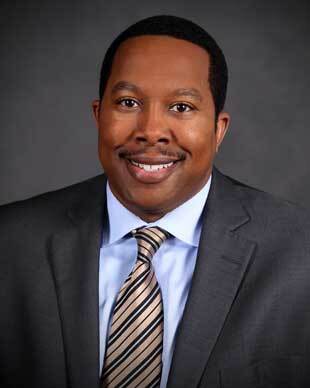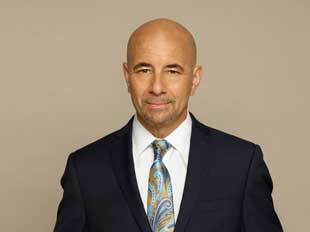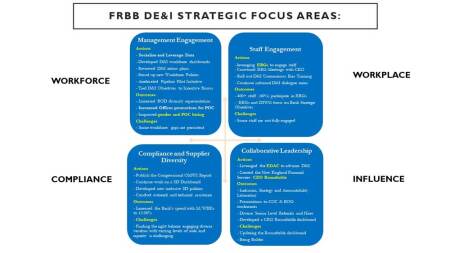ULI Boston/New England and other local partners—Builders of Color Coalition, CREW Boston, Greater Boston Real Estate Board, NAIOP Massachusetts, and the Real Estate Executive Council—recently hosted a webinar designed to provide actionable steps to increase diversity, equity, and inclusion (DEI) within the commercial real estate (CRE) industry.
The discussion, “Transforming an Industry: How the Federal Reserve Made Inclusion a Priority and Why CRE Needs to Listen, Learn, and Change,” featured Kirk A. Sykes, managing partner at Accordia Partners LLC, the former chairman of the Federal Reserve Bank of Boston (FRBB), and current member of its External Diversity Advisory Council; and Marques Benton, vice president, chief diversity officer and director of the Office of Minority Women and Inclusion (OMWI) at the FRBB.
Sykes began the discussion by rhetorically asking why this conversation is important now.
“The monetary policy goals of the Reserve Banks in this country foster economic conditions that achieve both stable prices and maximum sustainable employment for the country,” he said. “And COVID-19 and the Black Lives Matter movement are at the intersection of the derailment of this mandate. Lack of inclusion is at the heart of this derailment, and the most affected population is people of color. Now matters.”
Sykes cited the influence of millennials; environmental, social, and governance (ESG) criteria for investors; and shareholder activism as reasons why the time is ripe for change, since this new generation of investors “are basically investing their conscience.” He noted that there has been a significant rise in ESG investment, and “we are just in the infancy of this strategy. So whether you believe that you’re doing this for moral purpose or whether you’re doing it for financial gain, it really doesn’t matter. But know that it is something that is verifiably beneficial and accretive to your companies.”
As evidence, Sykes cited U.S. Census Bureau projections that by 2045, the United States will become a “minority white” nation, as well as the McKinsey & Company report, Delivering Through Diversity, which found that companies in the top quartile for ethnic and cultural diversity on their executive teams were 33 percent more likely to experience above-average profitability than companies in the lowest quartile. “Who would be exclusive to the detriment and fiduciary peril of themselves and their company?” he asked. “I think none of us.”
Benton, who assumed his current position with FRBB in 2010, said that the bank used a five-step approach to work toward its goals—using data, promoting dialogue, creating a common focus, collaborating, and living its values by “walking the talk.”
In order to address the diversity and inclusion (D&I) issues, FRBB first needed to identify the problems using a data-driven approach. “We had some assumptions about what we did and how well we were doing, which was corrected by looking at the data,” said Benton. “And having that data allowed us to have a really good dialogue about our assumptions and help us create a common focus on what we needed to do to address challenges, gaps, and issues.” The process “really opened our eyes” to the fact that this could not just be an HR and Office of Diversity–led effort—that it had to involve all the stakeholders, including leaders, the legal department, and all the business units of the organization, he added. The diagram below enumerates the four components that FRBB focused on to advance its D&I goals.
“It really has taken all four of these quadrants to be activated and engaged to achieve the progress that we’ve achieved over the last 10 years,” said Benton.
He and Sykes also emphasized that two of the most important ingredients in the success of the program were the buy-in from leadership at FRBB and the work of its External Diversity Advisory Council (EDAC). “If senior-level leadership [led by president and CEO Eric Rosengren and COO Ken Montgomery] had not bought in and dropped their shoulders to help this work go forward, then this was not going to happen. I think right out of the gate you have to have that,” said Benton.
The FRBB created the New England Financial Services CEO Roundtable, which focused on what was working and what was not in terms of D&I challenges common to the group. Early on, the Roundtable held a conference on strategies to help women advance to senior ranks within the industry. More broadly, they have taken collective actions around diversity-focused workforce policies, providing unconscious-bias training to hiring managers, collaborating on outreach programs to address Boston’s less-than-welcoming reputation, and connecting incentives (both monetary or nonmonetary) to D&I objectives.
“In so many ways, the vetting, the referrals, the encouragement—and the pushing to some extent—for us to be bold in our D&I journey [by EDAC] has been instrumental, and I think it’s something that other Feds and other firms can emulate to obtain the same kind of benefits.”
Another difficult issue that the EDAC helped the bank navigate was filling senior management positions within the bank with diverse talent. FRBB had traditionally promoted from within as employees progressed in their careers, but Sykes said the council came to the conclusion that they were not going to be able to change the senior management of the bank if they did not bring in people from the outside. “If we wanted to introduce people that don’t exist in an organization to start with, don’t we have to make the tough decision of bringing people in from the outside and have that conversation about why that value is important to our company?”
The results from the decade-long work are quantifiable. When Sykes joined the board in 2008, he was the first African American (along with one woman board member). Now, two-thirds of the board of directors is diverse by ethnicity or gender. Benton said that there has also been significant improvement in hiring and retention of both women and people of color.
But he also acknowledges that it is a long-term process. “What you will find as you engage in this journey is that this is a lot of work. And you really have to not only have to be dedicated by providing resources, but staying at it—and staying at it even when you get challenged and don’t see the progress you are looking to attain.”







